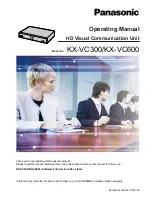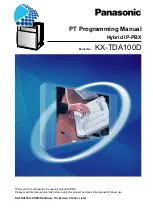
3-2
When a fault or isolate condition or is detected by the 4100, the panel does the following to
indicate the presence of the condition.
•
Yellow indicator, labeled “FAULT” or “ISOLATE” flashes
•
Tone-alert (piezo buzzer) sounds steady
•
The alphanumeric display on the interface panel indicates the fault or isolate condition, as
shown below.
** FAULTS **
EXT BELL
ISOLATE
ALARM
WARN SYS
FIREFIGHTER FACILITY
ISOLATE
FAULT
ALARMS = Ø
EXT BELL
ISOLATE
WARN SYS
ISOLATE
PREV
NEXT
ACK
ISOLATE
RESET
Press <FAULT ACK> to review
ISOLATIONS = Ø
FAULTS = 1
POWER
Figure 3-1. Interface Panel Showing Fault Condition
The first step in managing a fault or isolate condition is to
acknowledge
the condition.
Acknowledging a fault or isolate condition does two important things:
•
It records the time and date at which you observed the presence of the condition and
stores that information in the system’s historical log.
•
When you press the <FAULT ACK> or <ISOLATE ACK> key, the system displays
specific data on the location of the condition.
Note:
Isolate conditions typically auto-acknowledge and most times do not require
manual intervention. In some cases, however, you may be required to manually
acknowledge the isolate condition as described in this section.
It is important to understand that the 4100 can be configured with either
Global
or
Individual
Acknowledge. These options function as follows:
•
Global Acknowledge.
When global acknowledge is enabled, one press of the
<FAULT ACK> or <ISOLATE ACK> key acknowledges
every
point currently reporting
a fault or isolate condition.
•
Individual Acknowledge.
If individual acknowledge is enabled, the <FAULT ACK>
or <ISOLATE ACK> key must be pressed repeatedly to individually acknowledge each
fault or isolate condition.
The <FAULT ACK> and <ISOLATE ACK> keys are located under the cover of the panel. If
these keys are passcode-protected (by default, they are not), you cannot use these keys to
acknowledge fault or isolate unless you have the required passcode.
Continued on next page
Acknowledging Fault or Isolate Conditions
How the 4100
Indicates the
Presence of a Fault
What Acknowledge
Does
firealarmresources.com
Summary of Contents for SafeLINC 4100
Page 2: ...firealarmresources com...
Page 4: ...firealarmresources com...
Page 6: ...firealarmresources com...
Page 8: ...firealarmresources com...
Page 14: ...firealarmresources com...
Page 40: ...firealarmresources com...
Page 50: ...firealarmresources com...
Page 56: ...firealarmresources com...
Page 68: ...firealarmresources com...
Page 82: ...firealarmresources com...
Page 100: ...firealarmresources com...
















































